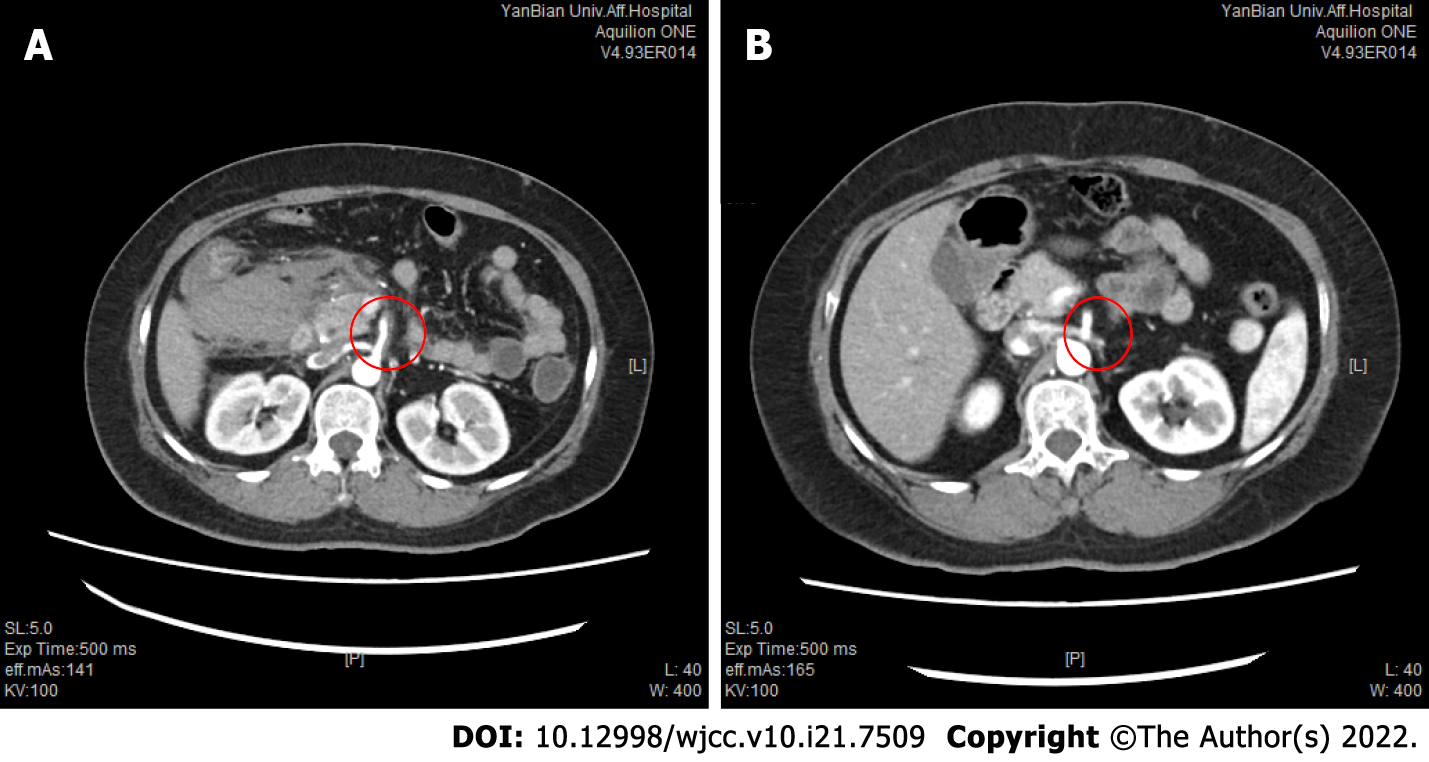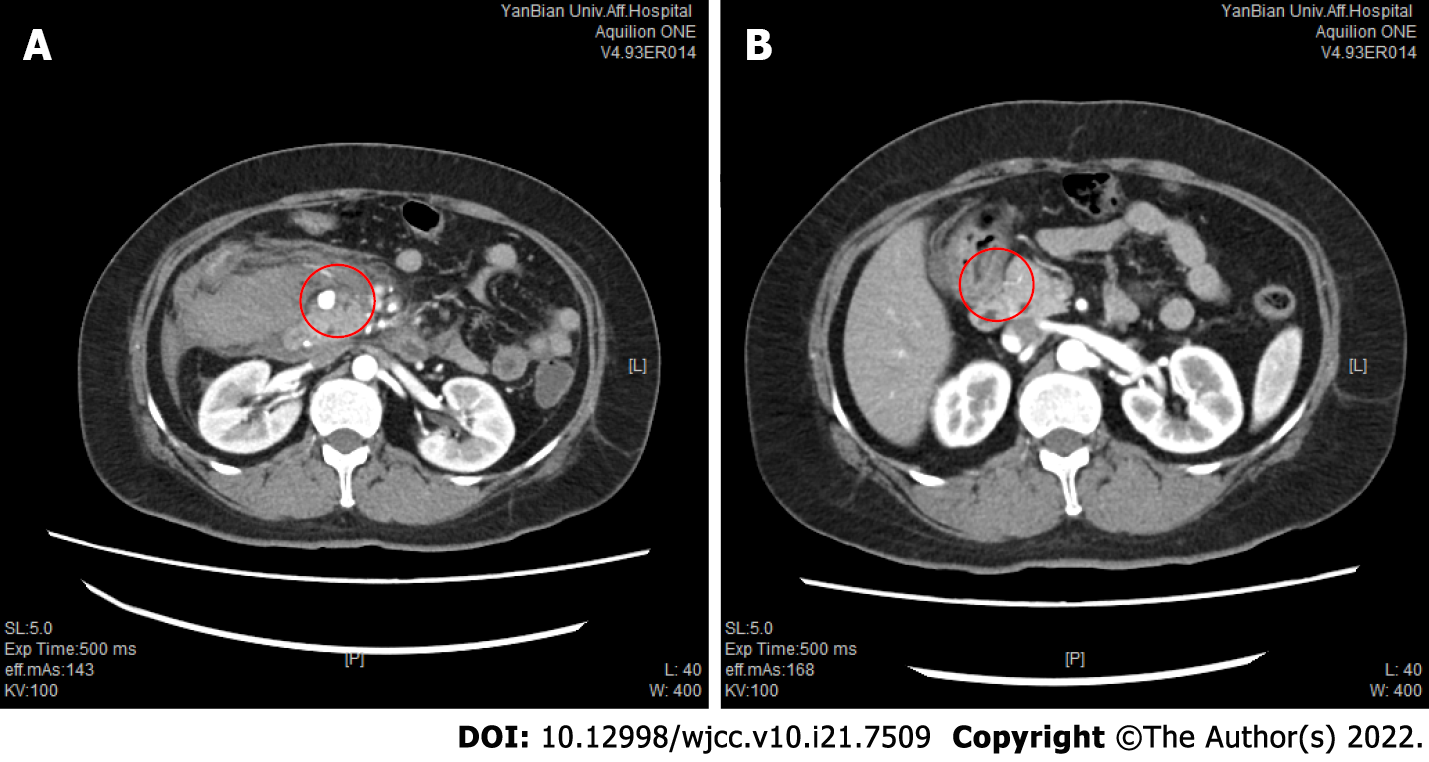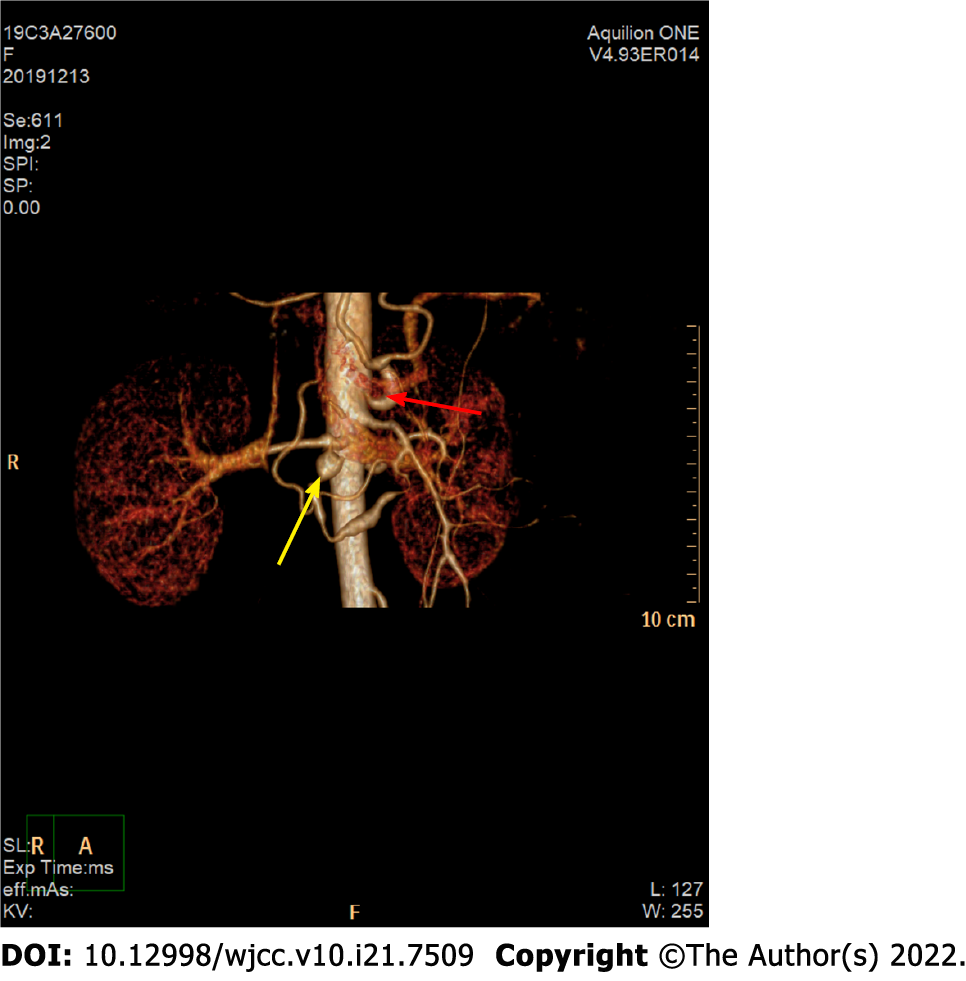Copyright
©The Author(s) 2022.
World J Clin Cases. Jul 26, 2022; 10(21): 7509-7516
Published online Jul 26, 2022. doi: 10.12998/wjcc.v10.i21.7509
Published online Jul 26, 2022. doi: 10.12998/wjcc.v10.i21.7509
Figure 1 Comparison of superior mesenteric artery thrombosis on enhanced abdominal computed tomography before operation and one year after operation.
A: Preoperative enhanced computed tomography (CT) showed mesenteric mural thrombosis; B: One year after surgery, enhanced CT showed that the superior mesenteric artery thrombosis disappeared.
Figure 2 Comparison of pancreaticoduodenal aneurysms on abdominal enhanced computed tomography before operation and one year after operation.
A: Preoperative computed tomography (CT) showed pancreaticoduodenal aneurysm with retroperitoneal bleeding, with a size of 1.2 cm; B: One year after surgery, enhanced CT showed that pancreaticoduodenal aneurysm disappeared.
Figure 3 Vessel reconstructions based on computed tomography angiography images.
The origin of the celiac trunk is narrow, and the upper edge of the proximal tube wall is a sharp “V-shaped” depression (as shown by the red arrow). The thickness of the inferior duodenal artery is uneven, an aneurysm about 1.2 cm in diameter is seen (as shown by the yellow arrow), and abnormal collateral blood vessels are formed between the arteria gastroduodenalis and the superior mesenteric artery.
Figure 4 Abdominal enhanced computed tomography examination showed that the abdominal cavity was narrow.
A: Sagittal image (as shown by the yellow arrow) showing that the abdominal cavity aortic opening is at the T12 level. The starting point of the celiac trunk is narrow and abnormal, and the upper edge of the proximal wall of the celiac trunk is a sharp “V-shaped” depression; B: Coronal image (as shown by the red arrow) showing abnormal stenosis at the origin of the celiac trunk.
- Citation: Lu XC, Pei JG, Xie GH, Li YY, Han HM. Median arcuate ligament syndrome with retroperitoneal haemorrhage: A case report. World J Clin Cases 2022; 10(21): 7509-7516
- URL: https://www.wjgnet.com/2307-8960/full/v10/i21/7509.htm
- DOI: https://dx.doi.org/10.12998/wjcc.v10.i21.7509












